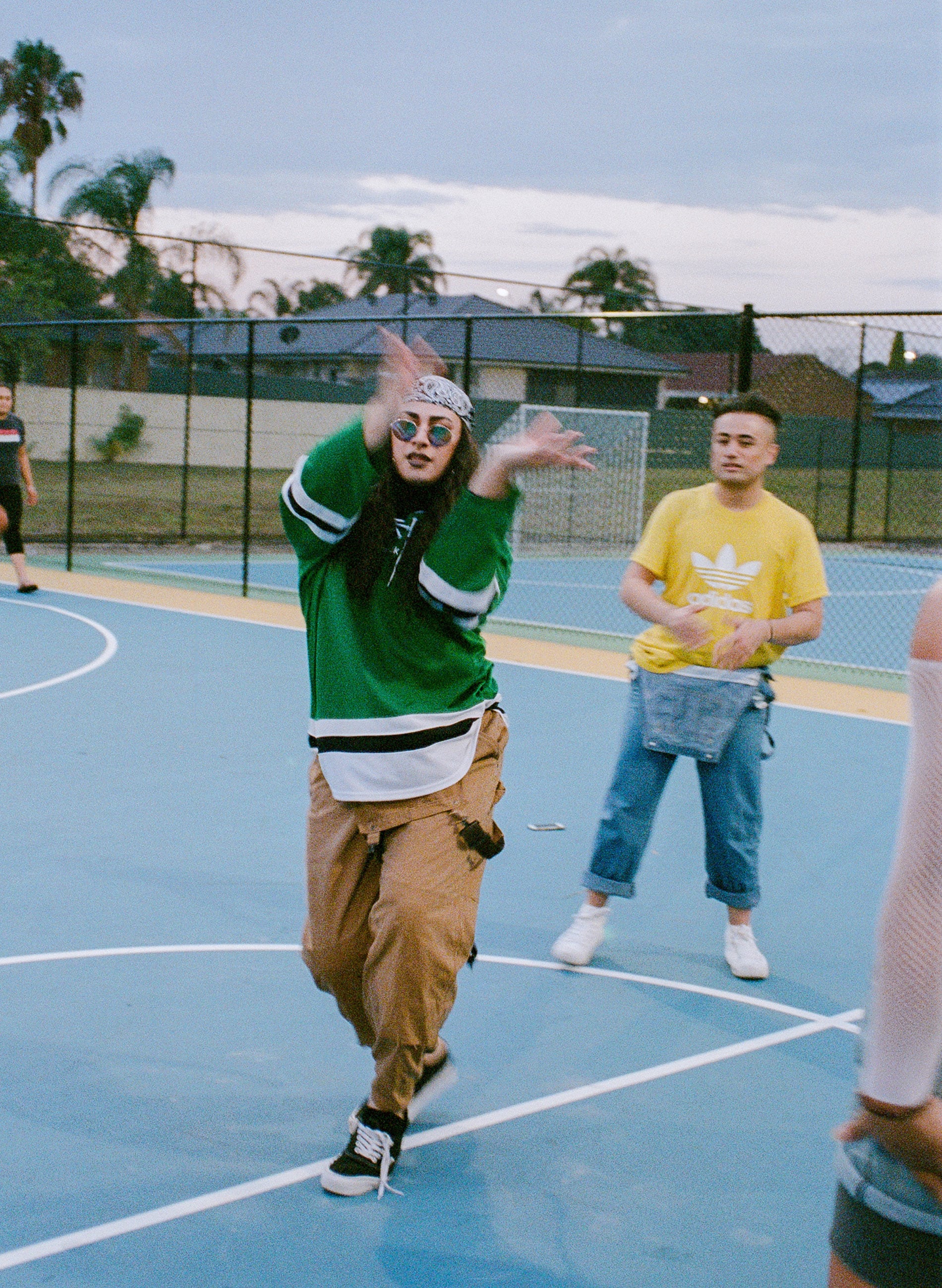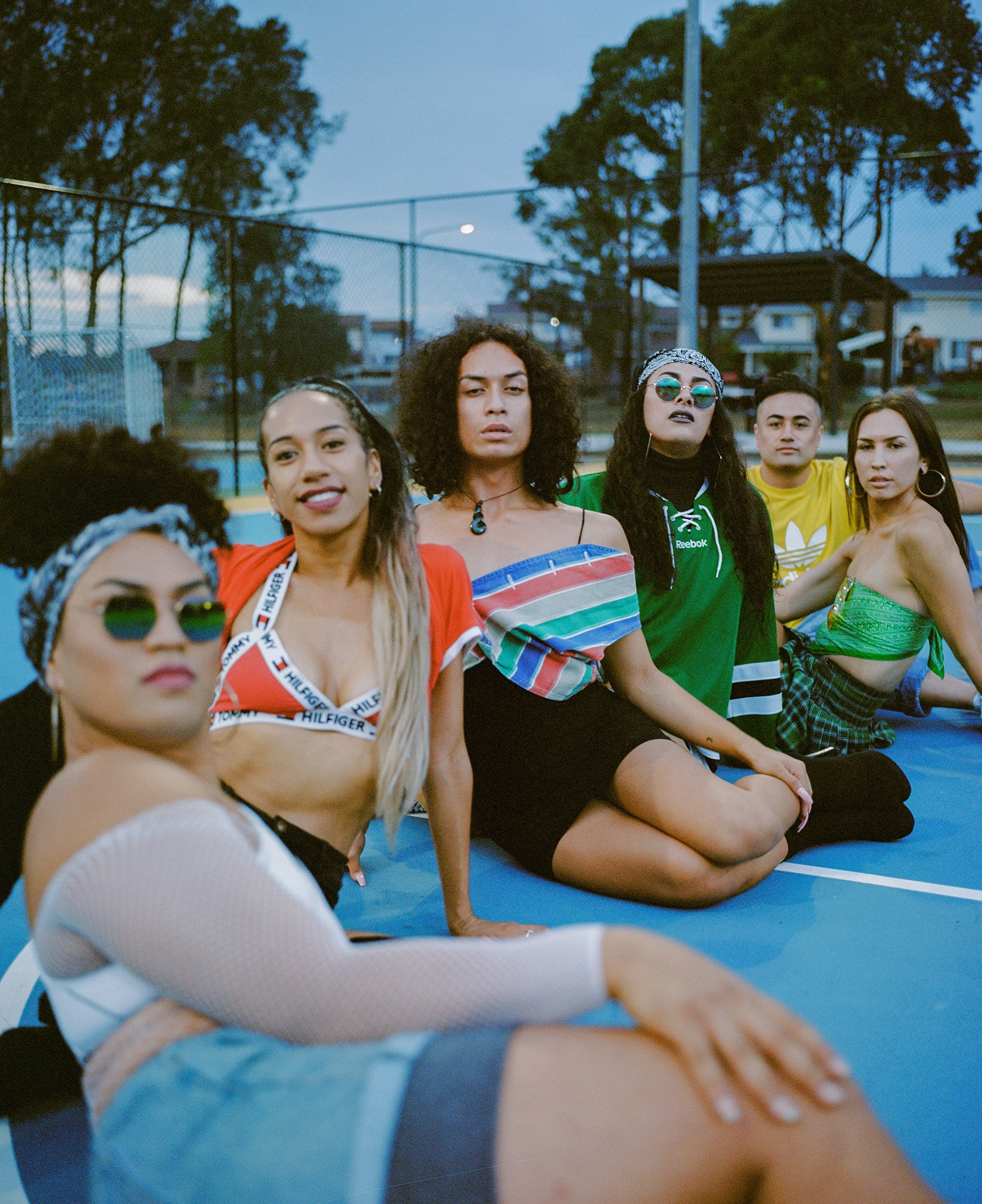I’ve been thinking a lot about how survival is often linked to collectivity, specifically for people of colour, specifically for myself as a trans person of colour who owes so much of my survival to the collectives I’ve belonged to and the communities that have held me. I often think about what it means to be singular or more so, the times I have been singular and the different experience that type of existence holds. When I’m travelling alone, traversing through public spaces, on trains or at an airport, there’s a particular way of being that I often switch into, an awareness of safety but also an overwhelming sense that I am alone, that I am ‘without’ and everyone else is ‘within’. It’s a feeling of separation and distance that I have felt most of my life and particularly in my trans adulthood. It’s a feeling that has shifted my identity but also had me question it and perhaps most importantly it’s a feeling that has moved my practice into the collaborative space it is in today.
In late 2017 Nike launched their ‘Be True’ campaign featuring none other than legendary mother of the House of Amazon, Leiomy Maldonado. In the one minute commercial we see Leiomy working her body in all its virtuosic glory — she’s sprinting through the streets, voguing down in her studio, giving sweatbox commercial tease with her Amazon family. She is accompanied by the voice of commentator Precious Ebony whose words still manage to fuck me up to this day. She asks: ‘Hey Lei, which angels gave you their wings? Which skies have you flown? When you reached the heavens, who was there to catch you when you fell?’ Precious’ words echo a sentiment of collectivity and black trans sisterhood. She suggests that Leiomy is not alone in her dips, spins and catwalk; in fact she is held by the women who came before her, her mothers, her sisters, those whose lives were lost or taken but now move through her.
I once read an interview where Fred Moten talks about how solo-practice is illusionary and that even when we believe we are making solo work, there are all these histories and people collaboratively working within, disrupting the solo body. I’m trying to remember when I first had that feeling, of being alone but with. I think as dancers we are taught and conditioned into the solo; even when working in an ensemble there’s a very singular energy attached to that sort of practice. It wasn’t until I was in third year dance school when a lecturer introduced me to Meg Stuart’s writing on archiving the body that I was put into a space where I felt I had a history to call on and, for me particularly, ancestral knowledge both queer and cultural. It was probably in this space of working that I really defined my practice; I remember that I hated the idea of solo making but understood the importance of embodiment, historical and ancestral embodiment. It was a clear shift from vague aesthetic performance to something that was functional, necessary and important. The more I developed this practice the more my social practice developed, the more I grew into my identity as both Filipino and trans feminine, the more I came to depend on the sociability within these communities.
The first collaborative works that I was engaged in were with my house, my community of friends, sisters, daughters and sons who form what most people know as ‘Slé’ or the ‘House of Slé’. How we found each other seems to be, and continues to be, our most successful collaboration yet. There’s a cloud of white-cis-heteronormativity that dominates so many spaces in Sydney and have kept so many of us singular and separate for so long, that when we do come together it’s a victory and step into our survival. I remember when I met my daughter Yovana — we were both in a very hetero space, The ‘Laundry bar’ on a Saturday night to be specific, both ‘passing’, moving within the confines of cis normativity and then we clocked each other. Time and space changed when we connected, suddenly a wall of trans sisterhood was built around our bodies and we vogued down into the night with our straight counterparts looking into a moment they could barely access or understand.
This and so many other moments have shaped the way we present work as a house and allowed us the tools we need when presenting work in compromising situations. Coming together to work in spaces that have historically denied our voices but acquired our bodies, such as museums and galleries, can be triggering to say the least, so we often have to ask ourselves these questions: What does collectivity give us as trans women of colour? As black and brown artists working within cis-white dominated spaces? What is the felt difference we feel when we are together? How do we embody this shifting moment of singularity into collectivity as a practice and work? A lot of the answers direct us towards a feeling of empowerment, but not just the immediate empowerment that comes with performing to a gagged audience. It’s an empowerment that goes beyond the space and people, an empowerment awarded to us from us, an empowerment that feels authentically generated and not laced with tokenism and fetishism. An empowerment born from collectivity and manifested as agency and our right to self determine.
Being both trans and people of colour in a way demands a type of radical togetherness, for without each other there is no history, no lineage, nothing to understand how we survived up to this point. I can’t explain our coming together as much more than magic, ancestral, queer trans magic that was written in destiny and I guess this is how I’m trying to frame how collaboration happens, or should happen, for me. It should be destined, containing within its action a purpose and necessity, a clap back to all that has kept us singular and unsafe. Some of our girls found each other on public transport, through social media, on Grindr, at community centers or cultural gatherings, all of which bare the threads of our larger collective story. We exist as a growing body of work, an exhibition of survival and resistance, a collaboration made up of all our dreams and desires, curated by us for us.
Bhenji Ra is an interdisciplinary artist whose practice combines performance and video. Her work is often concerned with the dissection of cultural theory and identity, centralising her own personal histories as a tool to reframe performance.


